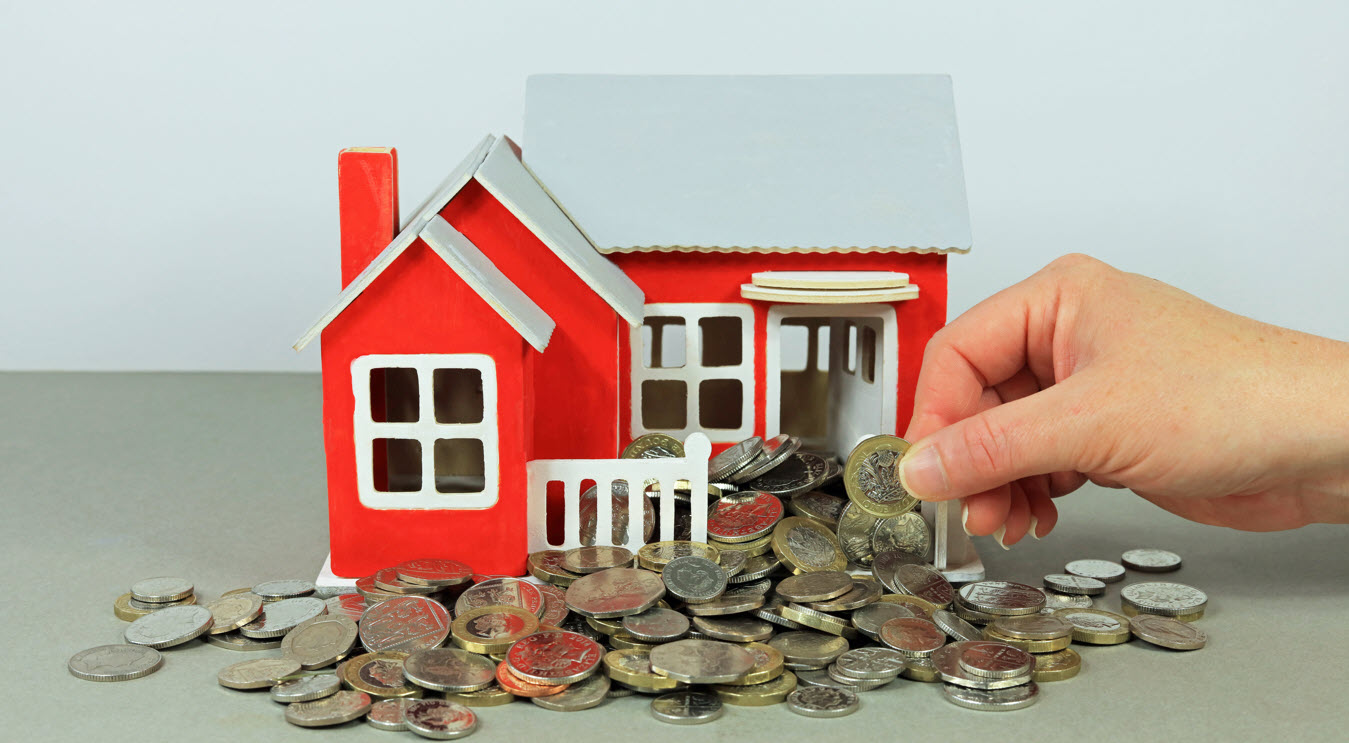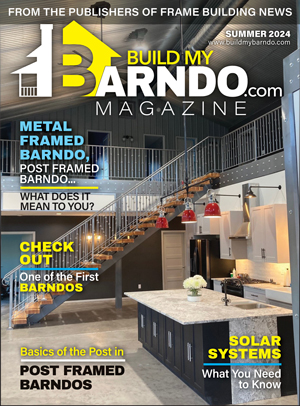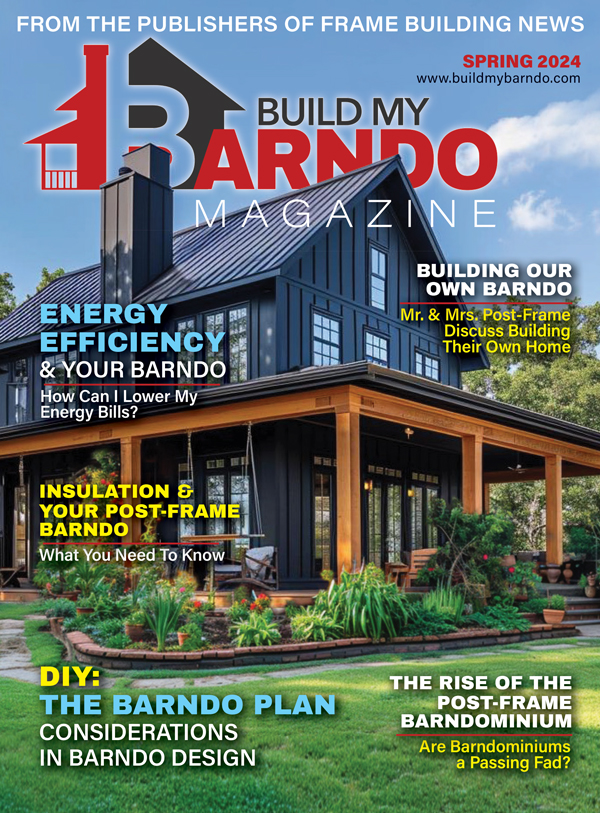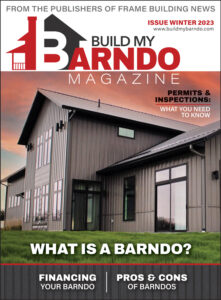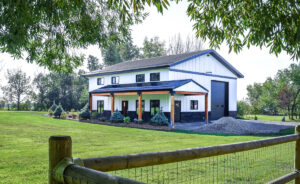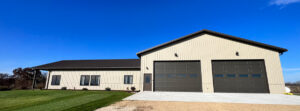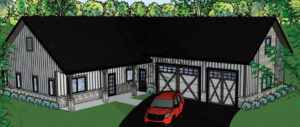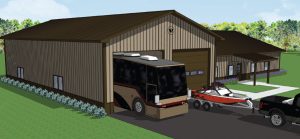While solid statistics on the rising popularity of barndominiums are hard to find, every post-frame builder we have spoken to has seen a rise in the number of people interested in barndominiums.
“In terms of an interesting development,” Keith Dietzen of SmartBuild Systems said, “for both wood and steel segments, barndominium growth is very intense. And it’s not a push by the post-frame community, it’s a pull-through by the end users. They’ve been educated that this is something that you can do.”
Rick Gudenkauf of Quality Structures agreed. “Once upon a time, all that was required of a post-frame building was a roof and a few walls to keep the elements out. Now we are often building more complex structures like barndominiums.”
Barndominiums (barndos for short) are popular with non-urban home builders, which makes sense once you understand that it is a home built using the precepts that have been commonly used to build barns and sheds. The word “barndominium” was created through combining “barn” with “condominium”. Similarly, some people call them “shouses” (shed houses). Others may simply say “post-frame homes”.
What are the advantages of barndominiums?
- Floor plans with wide open spaces
- Cathedral ceilings
- Flexibility in design
- Easily adapted home design for changes in space needs (such as adding family members or aging in place)
- Porches and/or 3-season rooms
- Large, attached shops or businesses
- Large, attached garages and storage spaces for vehicles, RVs, boats, and other items
- Radiant heat in the floor
- Energy efficient living
- Low maintenance, long-lasting exteriors
- Lots of natural light
- Time savings on the build
- Dollar savings on building the shell of the home
- The Barndo Lifestyle, aka countryside indoor/outdoor living
Of course, some of these things can be achieved with other styles of homes and all of them depend on the decisions you make as you plan your home. This list is just a general idea of the advantages that are often achieved when building a barndo. If a few of these advantages strike a chord with you, then a barndo could be for you.
Why Are Open Spaces and Cathedral Ceilings Common in Post-Frame Homes?
The basis of a barndo is the post frame. Large posts at the perimeter of the barndo are the main supports for the building; beams and trusses transfer the load to them. This means that load- bearing walls are not needed on the interior of the building allowing for large, open spaces. It also allows for a lot of flexibility in design, and if you desire to change the layout at a later date, it is much easier to achieve when you don’t have to worry about load-bearing walls.
Are Porches and 3-Season Rooms More Popular on Barndos Than Other Home Styles?
If the barndo is placed on a slab, which many of them are, and the walls are not placed right at the edges, your porch is already half-built. The roof just requires a slight extension to create a covered space along one side, around the corner, all the way around the structure if you desire.
Why are Barndos Associated with Huge Garages, Shops, and Storage Places?
Historically post-frame building was used mainly for barns, garages, shops, and storage, taking advantage of their quick and easier construction. It is natural that people seeking large spaces for these traditional uses would consider adding on living space with enhanced insulation.
Why Is Radiant Heating a Common Component of Barndominiums?
When a home is built on a concrete floor, incorporating radiant heat into the slab is commonly done for comfort.
Are Barndos Energy Efficient?
Post-frame buildings generally allow less heat transfer through the walls because there is less wood involved. Further, builders usually insulate with spray foam, which is a good, well sealing insulator.
Are Barndos Known for Easy Maintenance Exteriors? Are They Durable?
The barndominium is an outgrowth of pole building; which were nearly always clad in metal; metal panels for roof and walls. This low-maintenance, long lasting material is one of the benefits of post-frame that draws people to this type of building.
Do Barndos Guarantee a Lot of Natural Light?
You will only have as much natural light in your barndo as you plan for. Windows and skylights can let in plenty of natural light. If you are building a barndo with high or cathedral ceilings, you will have the options of very tall or stacked windows, but if you are planning on a high-efficiency build, you will want to consider the placement of them.
Do You Save Time and Money By Building a Barndo?
A couple of the common reasons people are interested in building barndos are time and money considerations. You can save time and money by building a barndo rather than other types of homes. The building framework is much simplified in a barndo which is where the savings of time and money can be obtained. However, other aspects of the build will be similar regardless of the type of home you build. Cabinets, plumbing, electric, septic, roof panels, and wall panels or siding are all examples of the kinds of things that will cost the same whether you are building a barndominium or a more traditional style of house.
Do people associate a country lifestyle with barndominiums?
Many of the people who choose barndo living are people looking for an indoor/outdoor way of life. This is, no doubt, partly because post-frame was originally just used for things like barns and machine sheds, mainly they were a lot of the buildings you saw out in the countryside.
Many of the advantages of barndominiums make them attractive to people looking for this type of lifestyle; large porches, lots of windows and natural light, large spaces to house recreational items such as boats, RVs, snowmobiles, bikes, kayaks, patio furniture, and more.
Finally, the countryside is where barndominiums are typically built, perhaps because there aren’t a lot of city lots available, municipal ordinances or Homeowners Association rules make it difficult or impossible, or maybe it is simply because a different aesthetic rules in urban areas.



